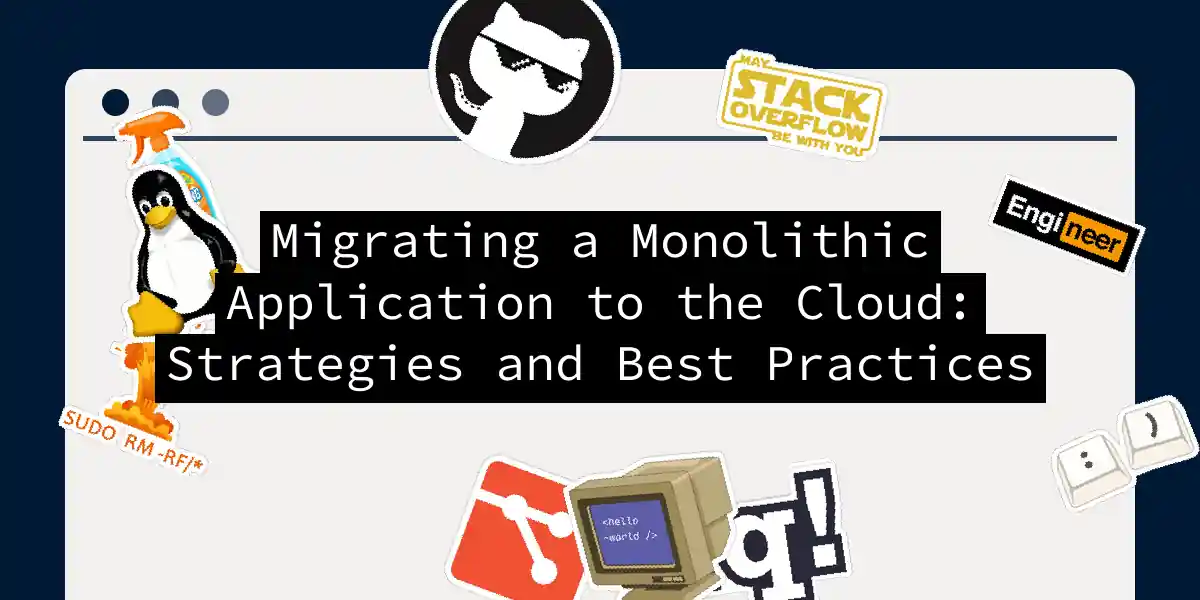Migrating a monolithic application to the cloud is a journey that can be as daunting as it is rewarding. It’s like moving from a cozy, old house to a sleek, modern skyscraper—exciting, but also filled with potential pitfalls. In this article, we’ll explore the strategies and best practices to help you navigate this transition smoothly, ensuring your application not only survives but thrives in its new cloud home.
Understanding the Why
Before we dive into the how, let’s quickly address the why. Why migrate to the cloud at all? The benefits are numerous:
- Cost Savings: No more hefty bills for hardware and maintenance.
- Scalability: Scale up or down as needed without the hassle of physical infrastructure.
- Reliability: Cloud providers offer robust redundancy and failover capabilities, ensuring your application stays up and running.
- Security: Enhanced security features and regular updates mean your data is safer than ever.
Strategies for Migration
There are several strategies to migrate your monolithic application to the cloud, each with its own set of advantages and challenges.
1. Rehosting (Lift-and-Shift)
This is the simplest approach: take your application as it is and move it to the cloud. This method is quick but doesn’t leverage the full potential of cloud services.
2. Replatforming
This involves making some optimizations to the application before moving it to the cloud. For example, you might switch to a cloud-native database or use cloud-specific services.
3. Refactoring
This is the most complex but rewarding approach. You break down your monolithic application into microservices, each running independently in the cloud. This allows for greater flexibility and scalability.
Best Practices for Migration
1. Audit and Plan
Before you start, audit your current infrastructure. Identify which applications are easiest to migrate and which will require more effort. Create a detailed plan, including timelines and resource allocation.
2. Test Thoroughly
Testing is crucial. Ensure that your application works as expected in the cloud environment. This includes performance testing, security testing, and user acceptance testing.
3. Monitor and Optimize
Once your application is live in the cloud, monitor its performance closely. Use cloud metrics and monitoring tools to identify bottlenecks and optimize as needed.
4. Train Your Team
Migration to the cloud is not just a technical change; it’s also a cultural shift. Ensure your team is trained on cloud technologies and best practices.
Overcoming Common Challenges
1. Technical Complexity
Migrating complex applications can be challenging. Break down the process into smaller, manageable tasks. Use cloud migration tools and services to simplify the process.
2. Data Security
Data security is paramount. Ensure that your data is encrypted both in transit and at rest. Use cloud security services to protect your application and data.
3. Cost Management
Cloud costs can quickly spiral out of control if not managed properly. Use cost management tools to monitor and optimize your cloud spend.
Conclusion
Migrating a monolithic application to the cloud is a significant undertaking, but with the right strategies and best practices, it can be a game-changer for your organization. Remember to plan carefully, test thoroughly, and monitor continuously. And don’t forget to train your team—they are the key to a successful migration.
As you embark on this journey, keep in mind that the cloud is not just a destination; it’s a new way of doing things. It’s about being agile, scalable, and secure. So, pack your bags, grab your cloud map, and get ready to soar to new heights
